Vaufi
Pack Dog
- Joined
- Dec 10, 2006
- Messages
- 222
- Reaction score
- 136
- Location
- Munich, the beer capital
- Bike
- BMW F700GS
Nothing grand, but I thought this might be of interest for potential Balcan visitors :laughing4:
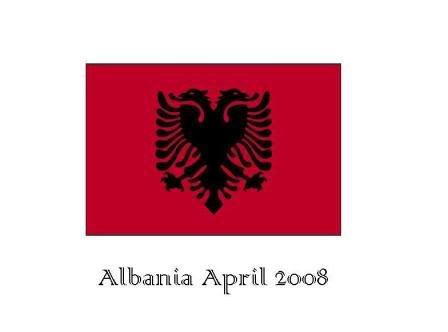
One thing is for sure: Albania is one of the most enjoyable countries to visit. Friendly people unspoilt by tourism yet, lots of dirt roads, great landscape.
We entered Albania from south, from Greece. Admittedly, nearing the border, I did have a queer feeling in my stomach since everything you heard about this country was terrible. It was hermetically sealed from the rest of the world for over 40 years and the period after the dictator Enver Hoxha had died was chaos pure: Corruption, crime, drugs, murderâ?¦
The border guards quickly made us change our minds. Their friendly and relaxed way of processing our entry visas and customs etc. put us at ease immediately. After touring around the country for two weeks we came to the conclusion that all the thugs and mafiosi were on business somewhere in western Europe ;-)
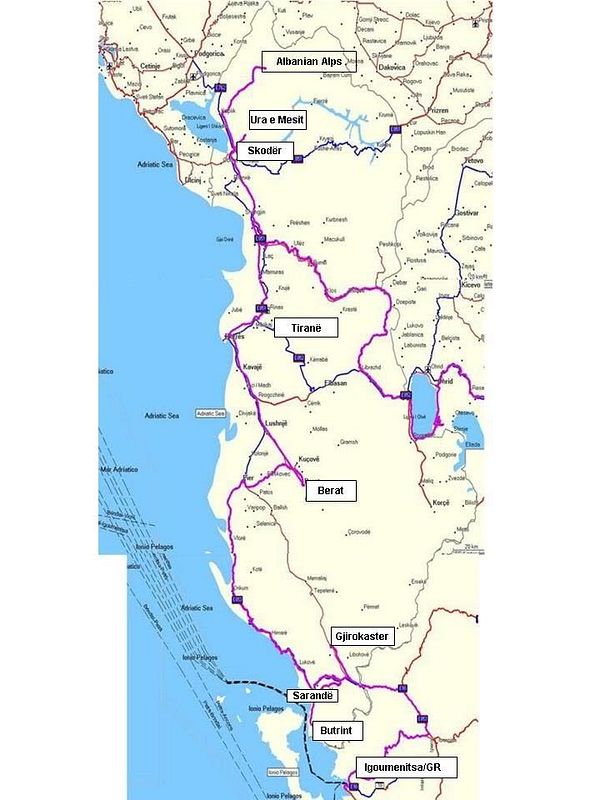
We booked a hotel in the beach resort Sarandë
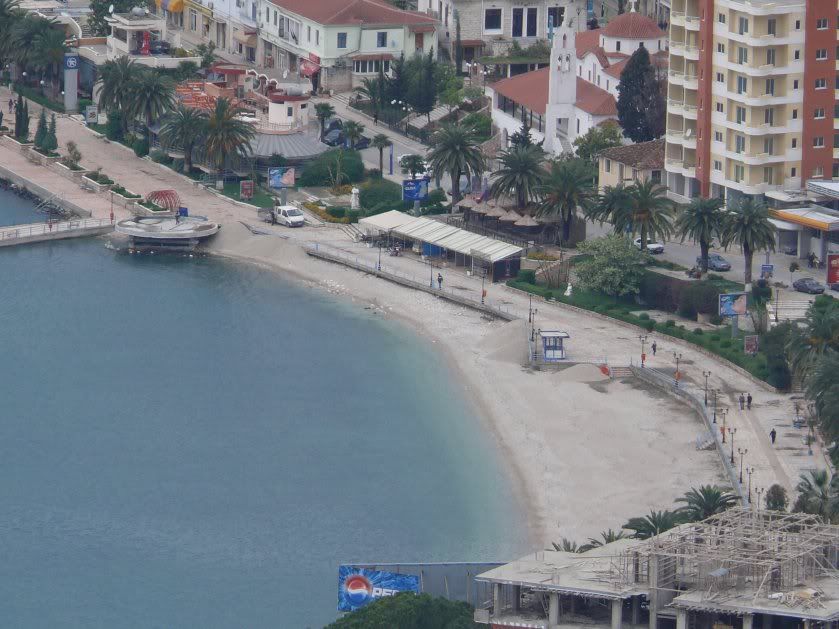
From here we visited the archaeological site of Butrint about 20 kms south of Sarandë.
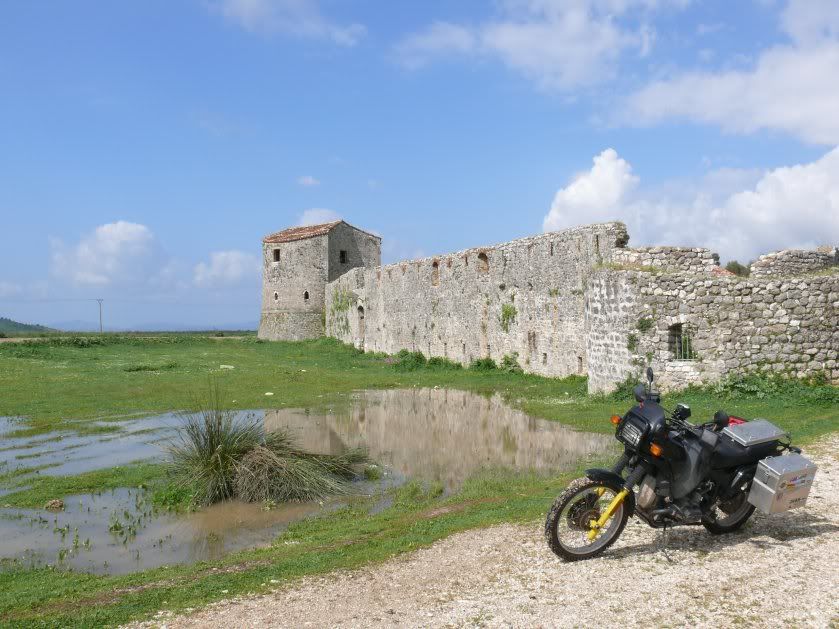

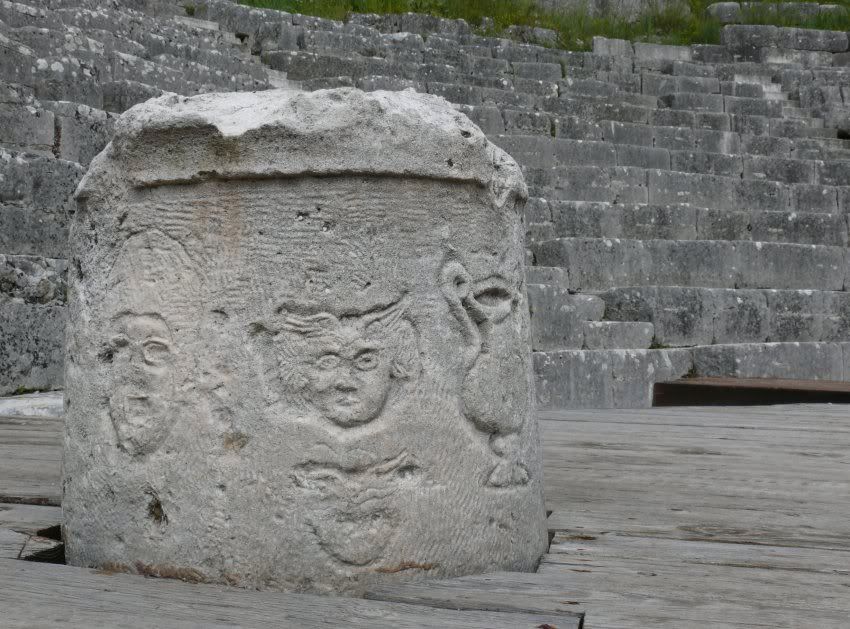
The ferry crossing the lagoon at Butrint was probably nearly as ancient

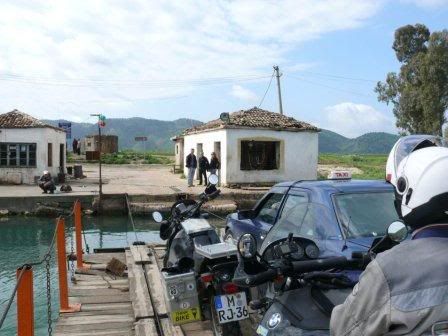
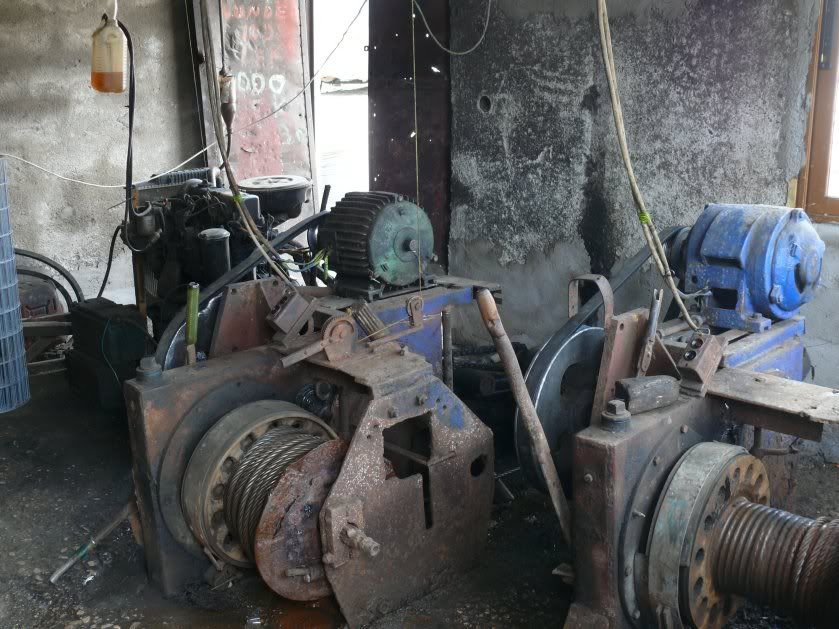
Across the coastal mountain ridge to the north-east lies another must-see: Enver Hoxha's place of birth, Gjirokaster. The castle ruins and the old town centre are very picturesque.
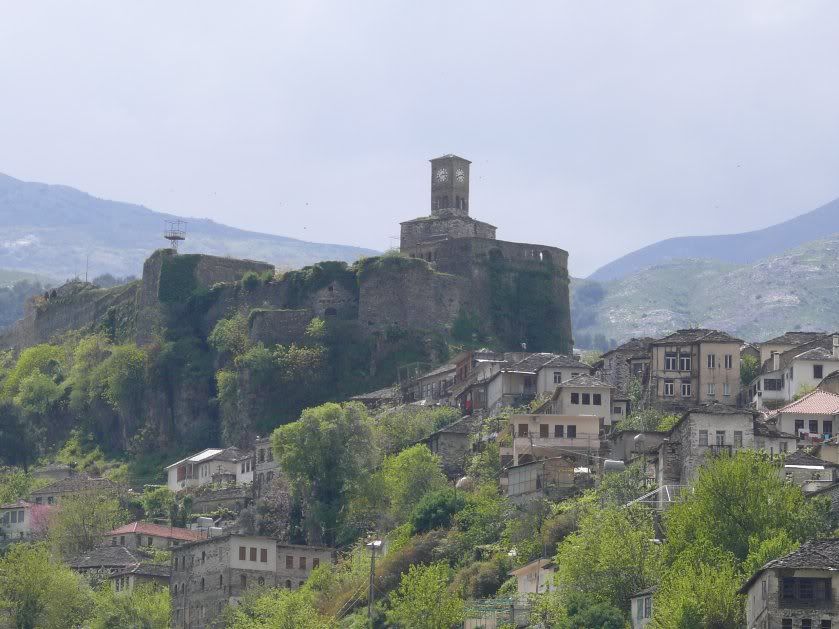
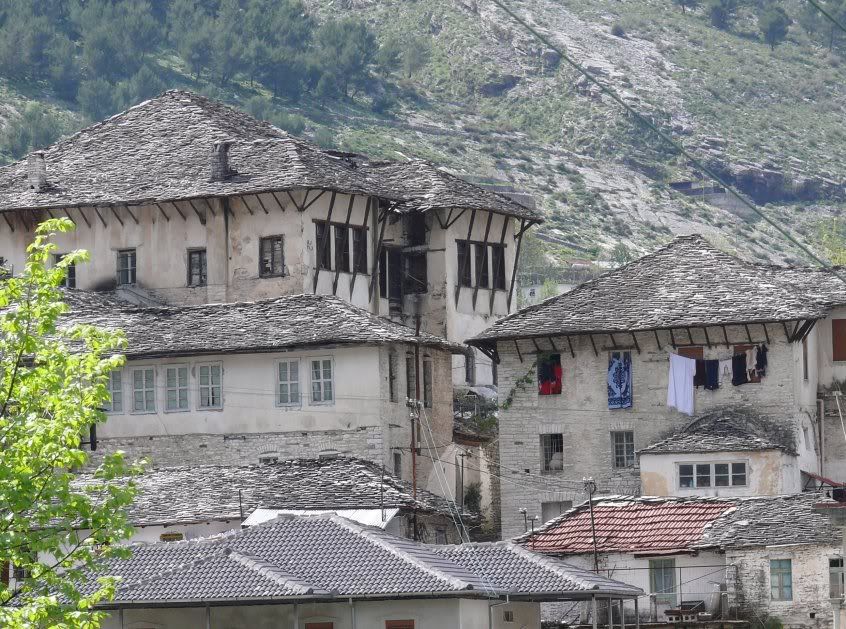
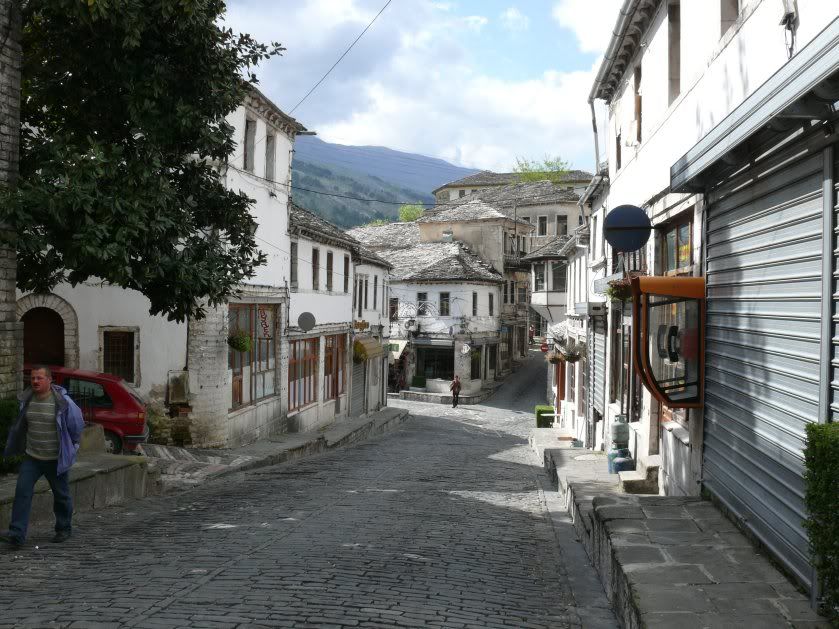
Returning to Sarandë there is a narrow, scenic backroad winding through a quiet landscape and small villages.
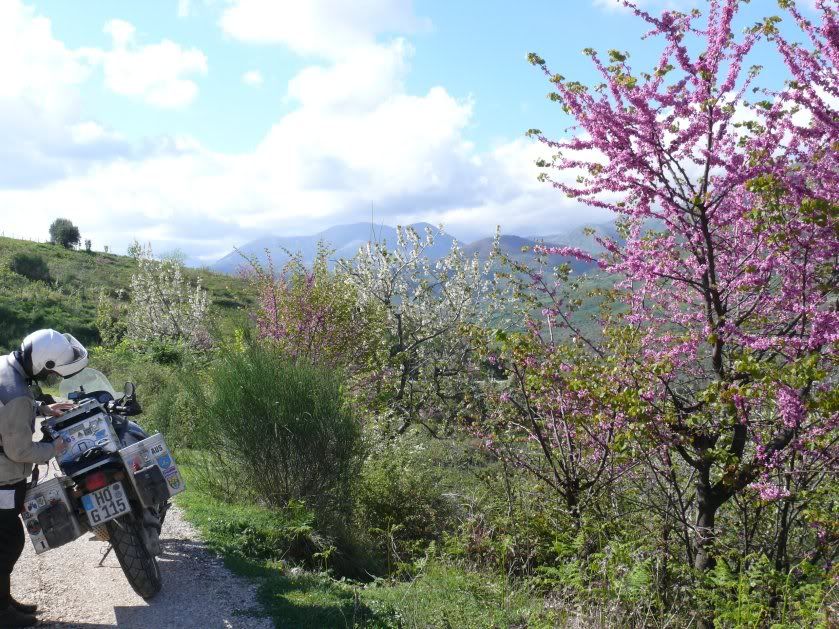
The next day saw us travelling along the coastal road from Sarandë northwards to Vlorë. The southern coastal road is by far the most beautiful part of the road going past Tirana up to Shkodër. The road is under construction, so that it was partly pretty rutted and muddy. Although this was a main road, it passed through narrow, winding villages clinging to the mountainside.

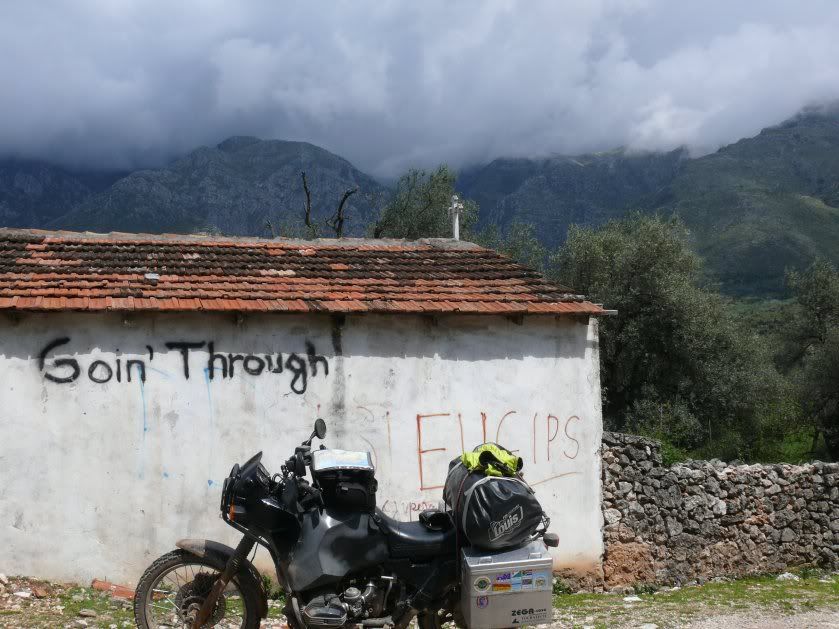

The highest pass, right next to the Adriatic Sea was over 1,000m. Absolutely stunning!
From Vlorë we turned away from the coast, heading eastwards for Berat, the second medieval town. Spread across a steep mountainside it is topped by a huge fortification dating back to Ottoman times. The Greek Orthodox Church within the precincts has been erected much later.
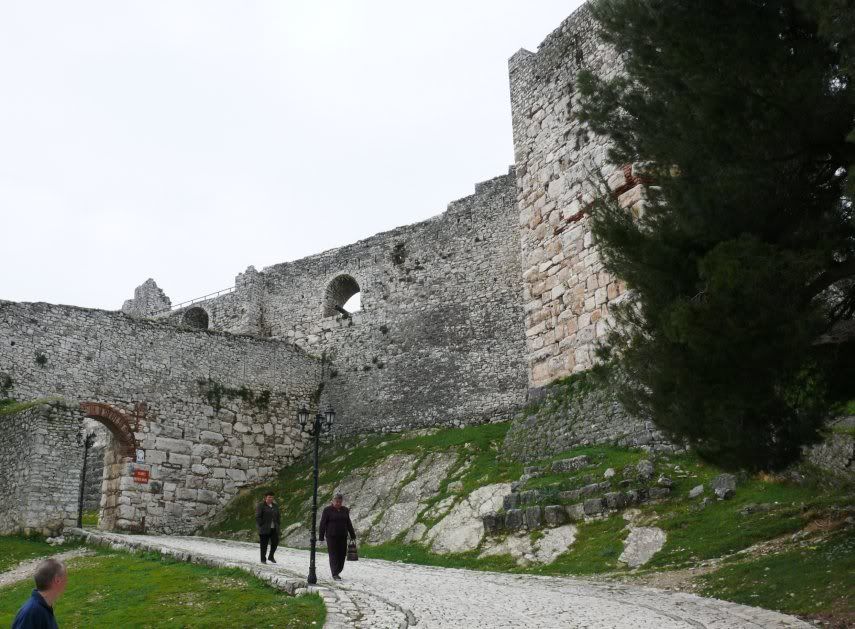
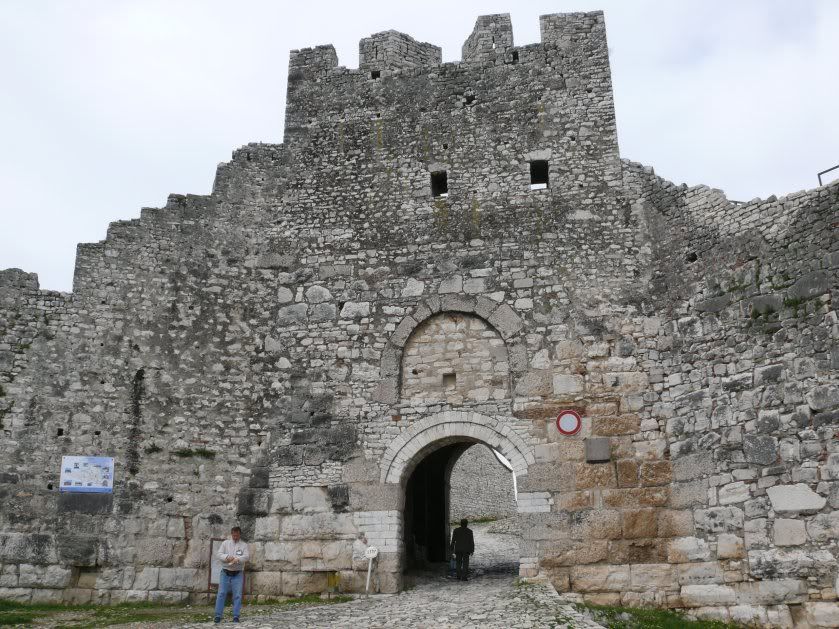
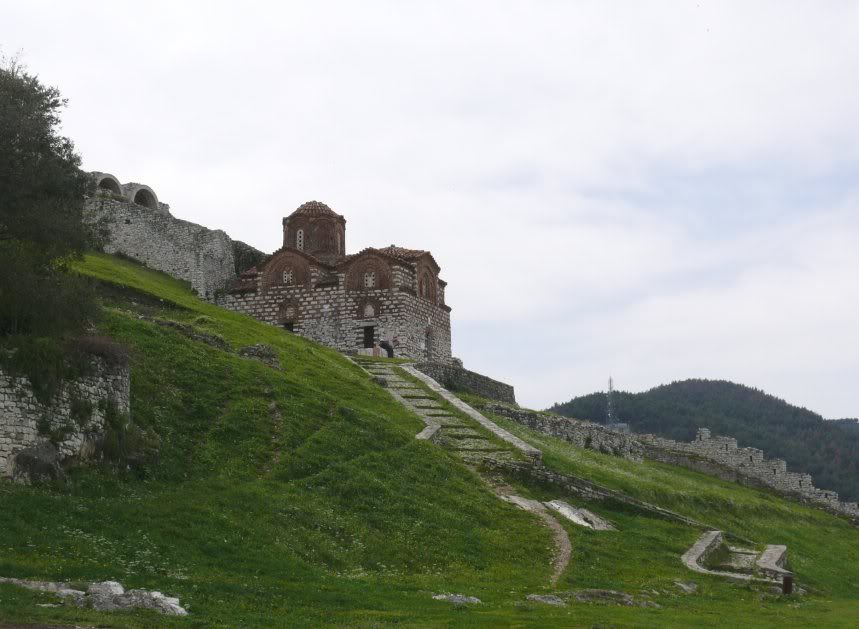
The little houses of Berat seem to stand on top of each other, staring at you through dark windows. Because of that it is also called the â??town with the thousand eyesâ?.

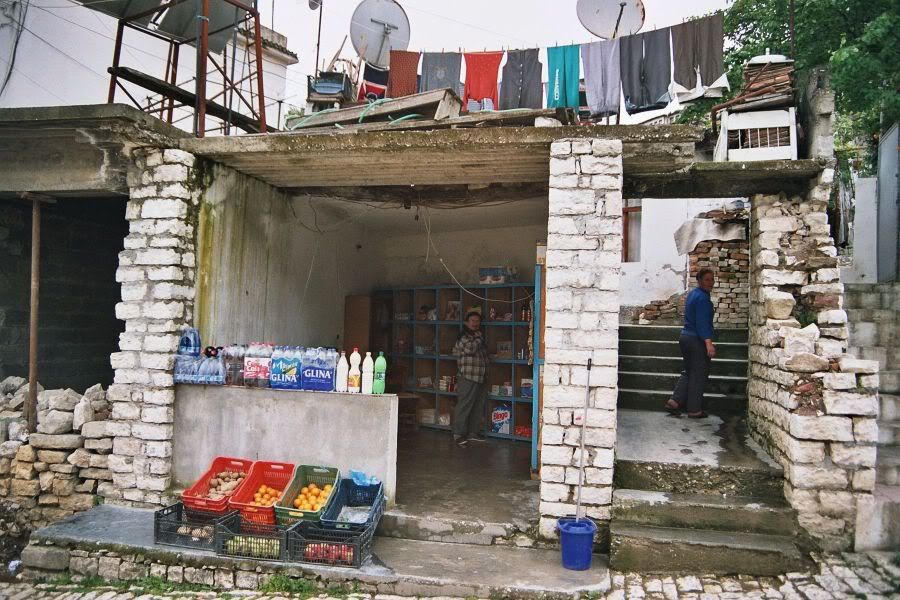
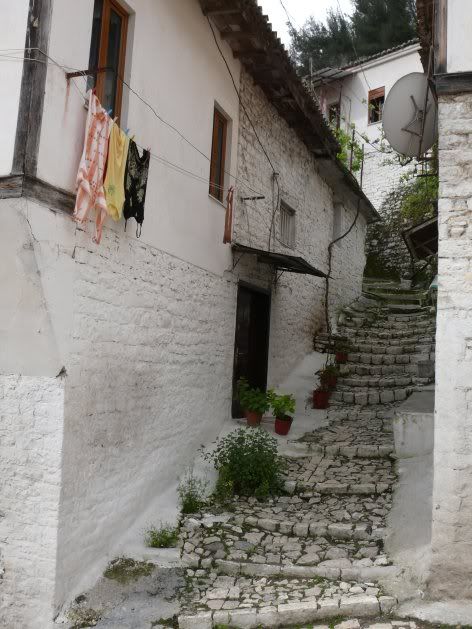
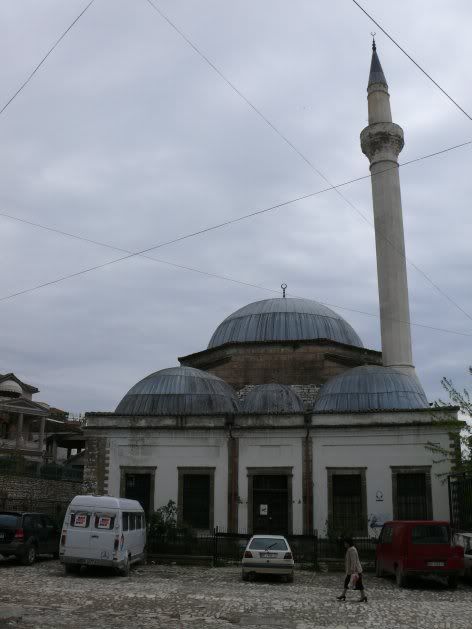
Towards the west, across of the river lies is the old Jewish quarter where we met Angostine. He proudly showed us around his century old house.
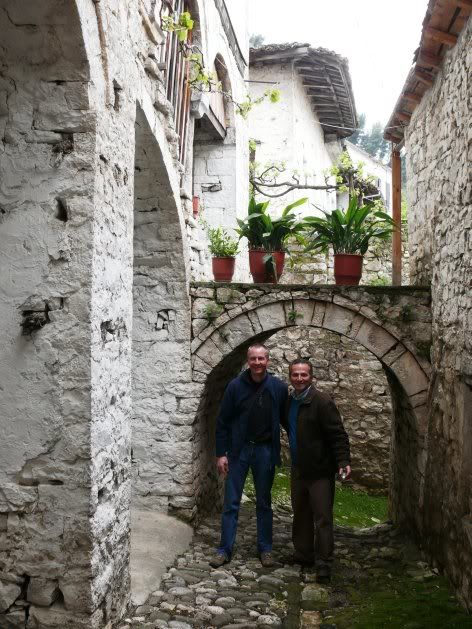

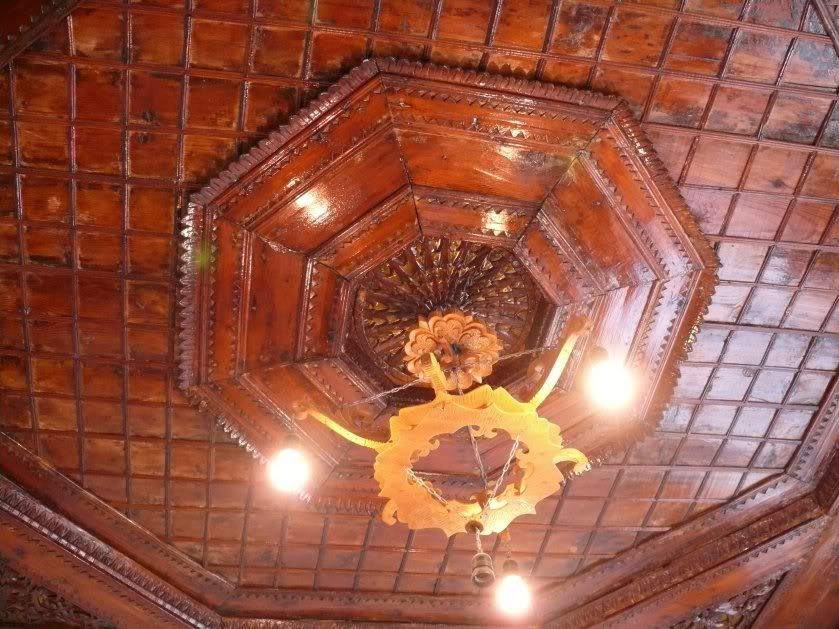
In the centre of Berat is the tourist office. Inside there is still the Ottoman decoration on walls and windows.
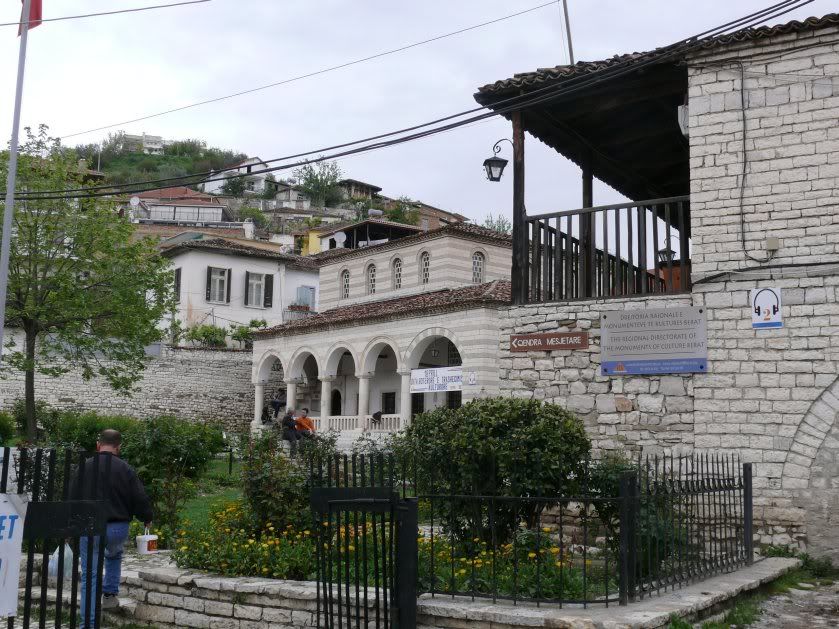
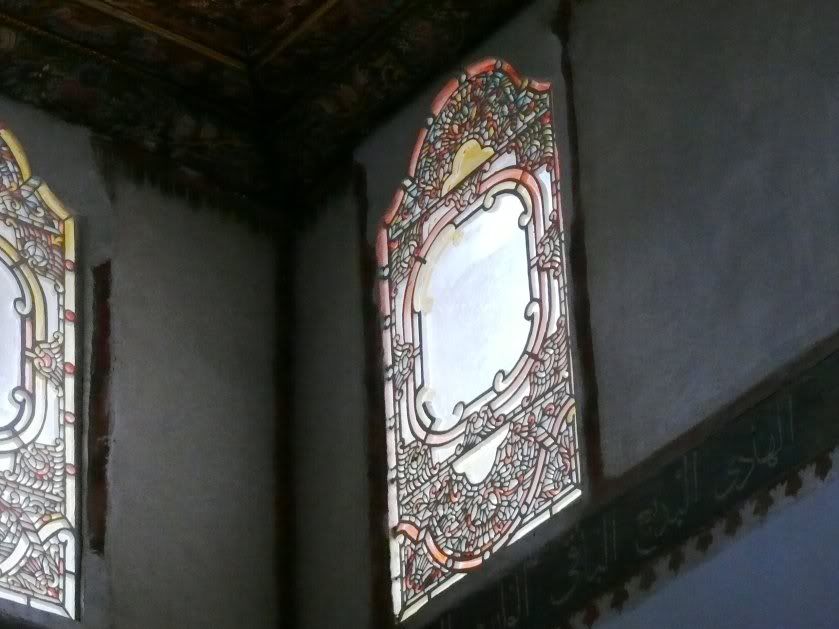
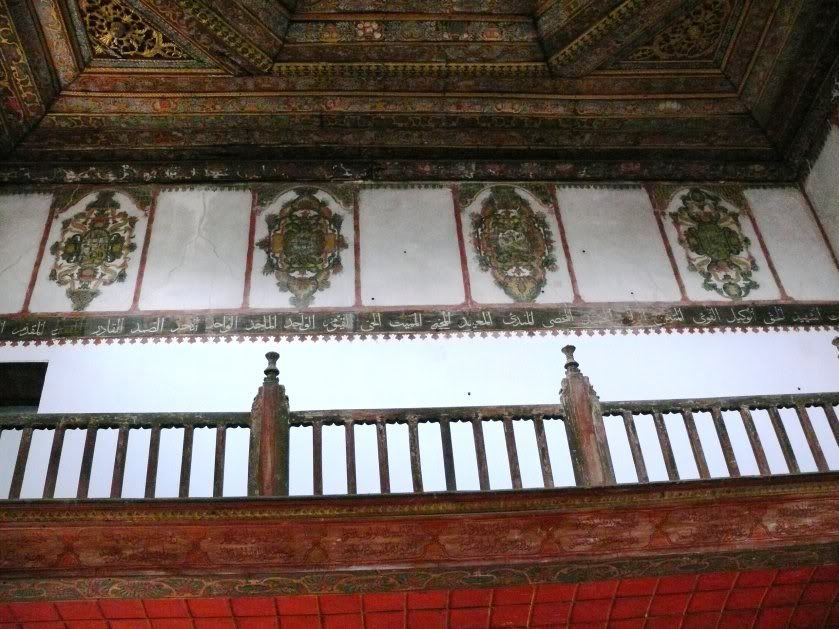
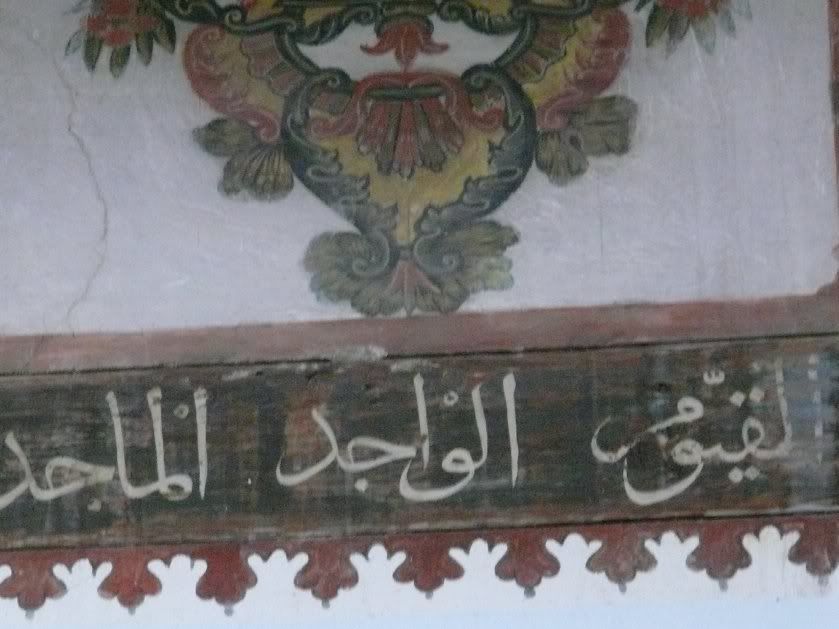
Quite nearby we found accommodation at Tomi's Mangaleni Hotel. Ice-cold draft beer and a lovely restaurant was reason enough to stay. From oru balcony we had a fantastic view across the city and the mountains.
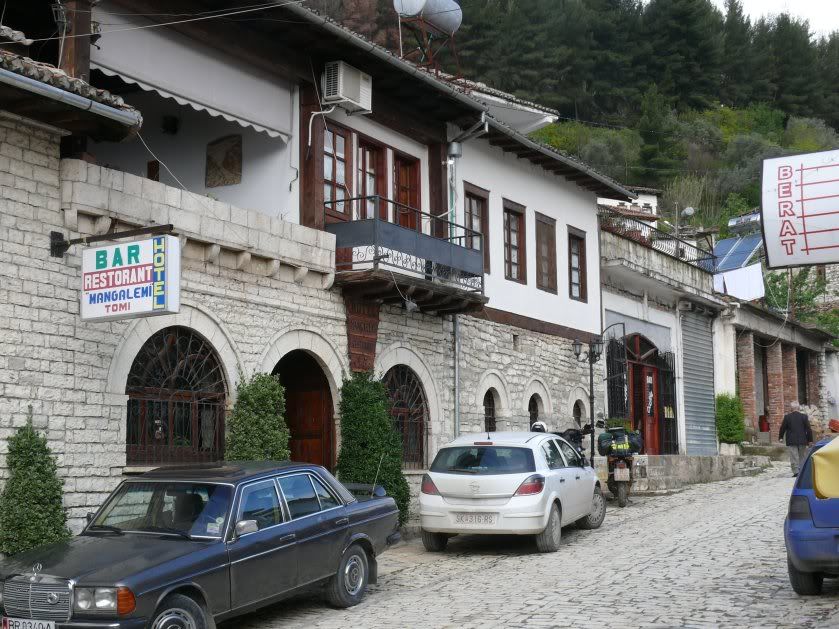

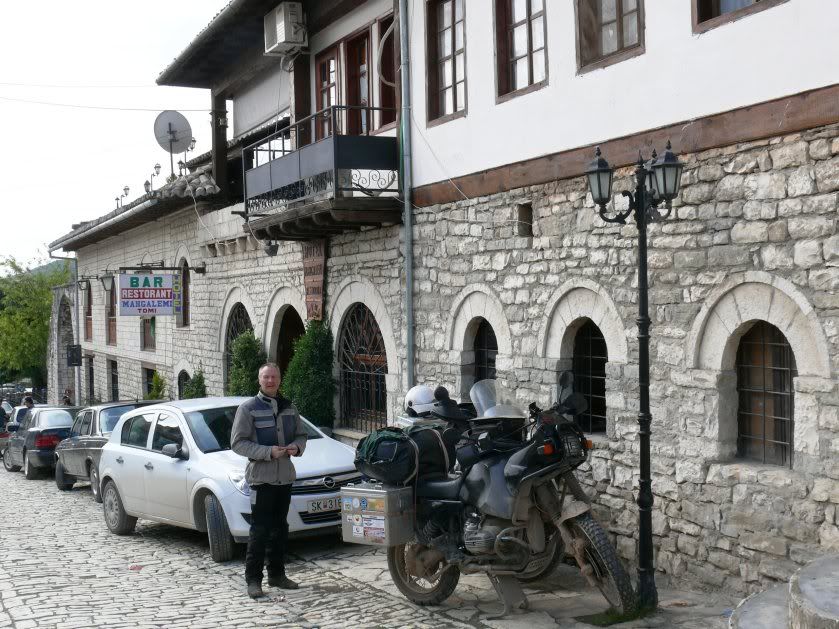
The next day took us to Skodër, about 60 kays south of the border to Montenegro. Skodër lies between he beautiful Lake Skutari and the Albanian Alps. The town itself is rather boring: Crumbling buildings from socialist times next to horrible semi-modern architecture. But the rural area, especially north-east of Skodër is very attractive. Not far away is the ancient Ura e Mesit bridge.
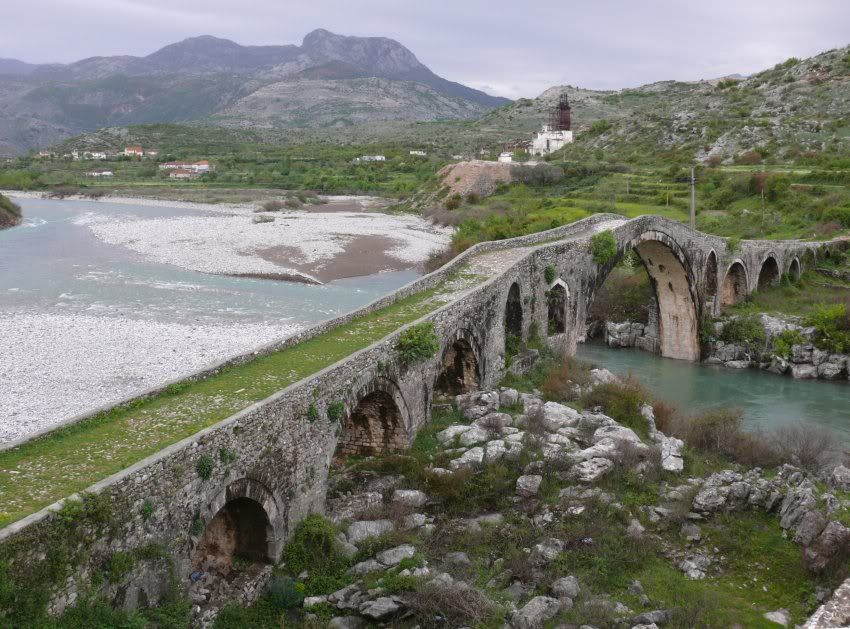
Further along are the Albanian Alps, reaching up to more than 2,000m. Unfortunately it was too early for a ride right up to the mountain village of Theti. In late February the Balcans and Greece had snow in abundance. So this stopped me at 1,400m.
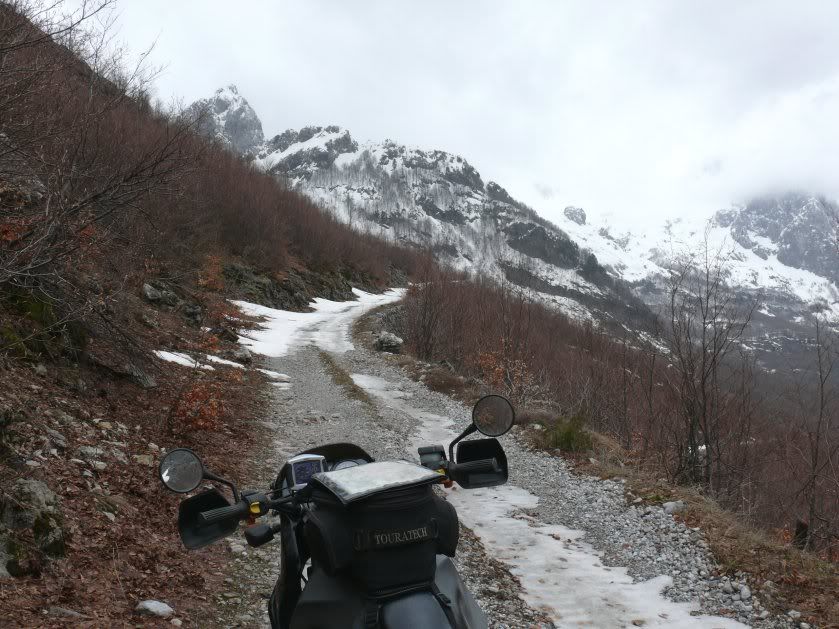
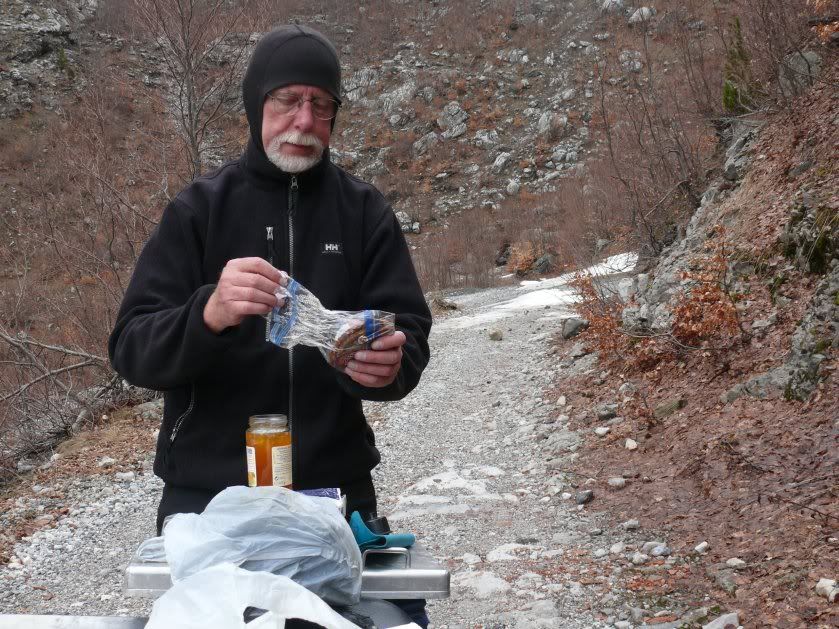
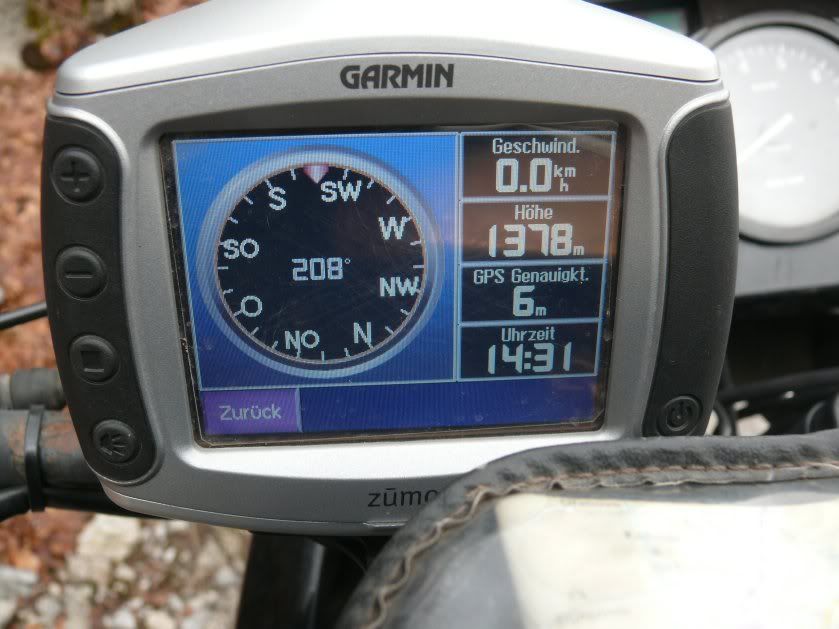
Too farken cold for a beer...
After a short picnic (biking makes you hungry) I found an inconspicuous café for a â??kafé turkâ? and a beer.
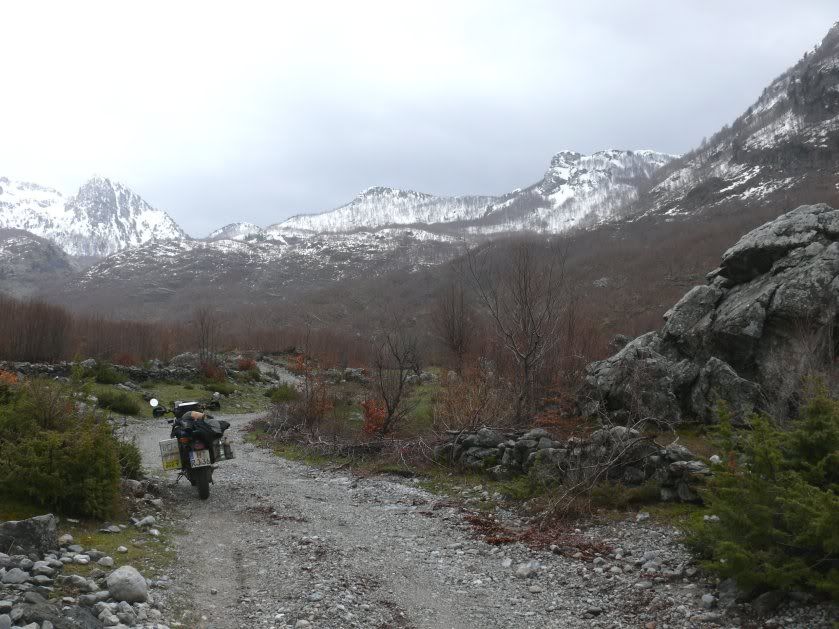
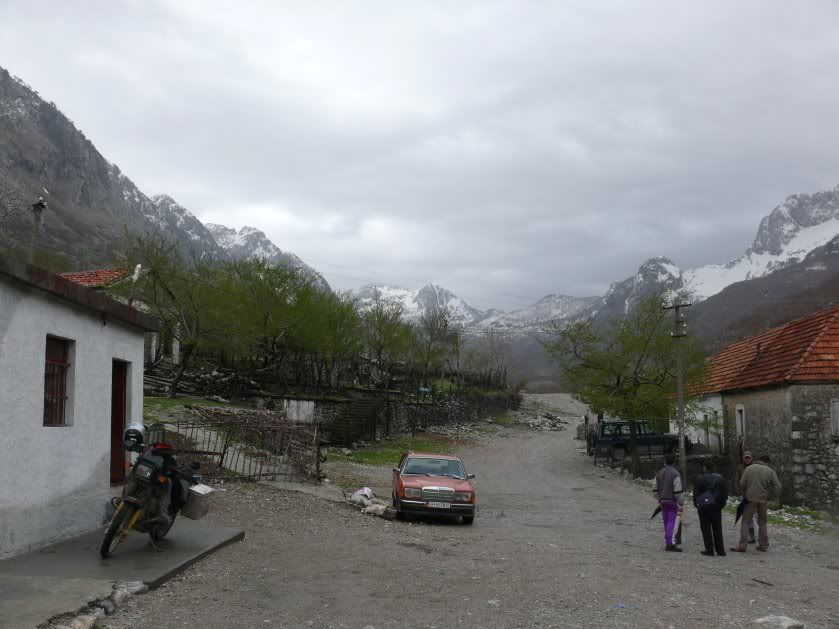
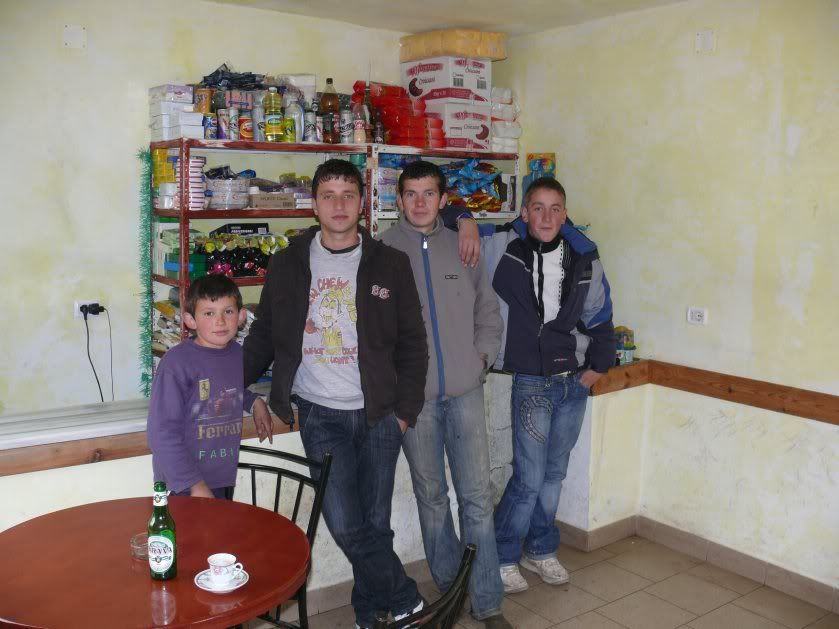
The guy standing in he middle spoke fairly good English and managed the whole situation ;-)
From here I left for Lake Ohrid, which lies on the eastern border between Albania and Macedonia. As usual the small back roads were much more interesting than the main roads, so I took to the piste directly through the mountains. Here time seems to have stood still. The ploughing and sowing is done with horses and by hand. The donkey is still a general means of transport.
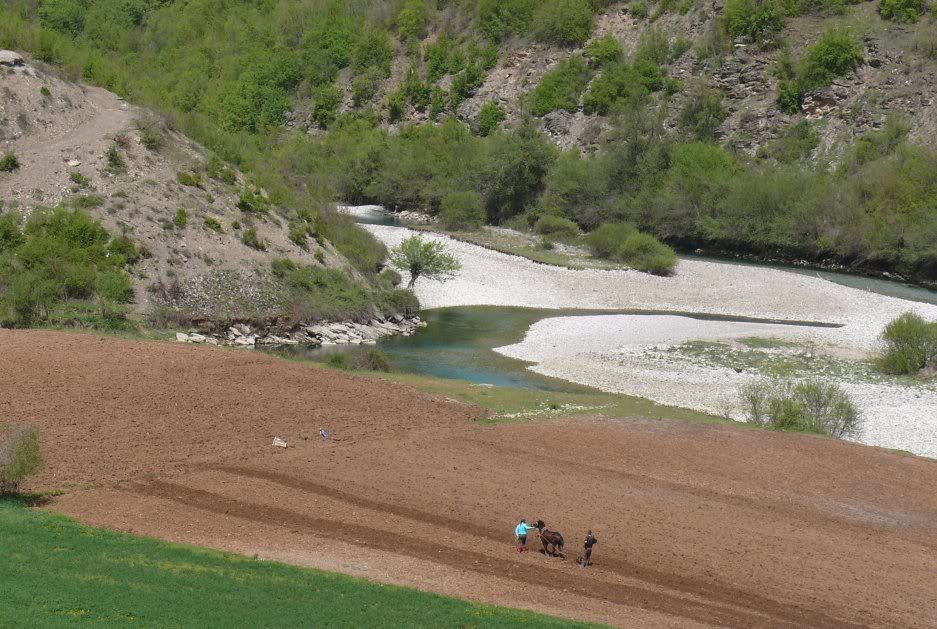
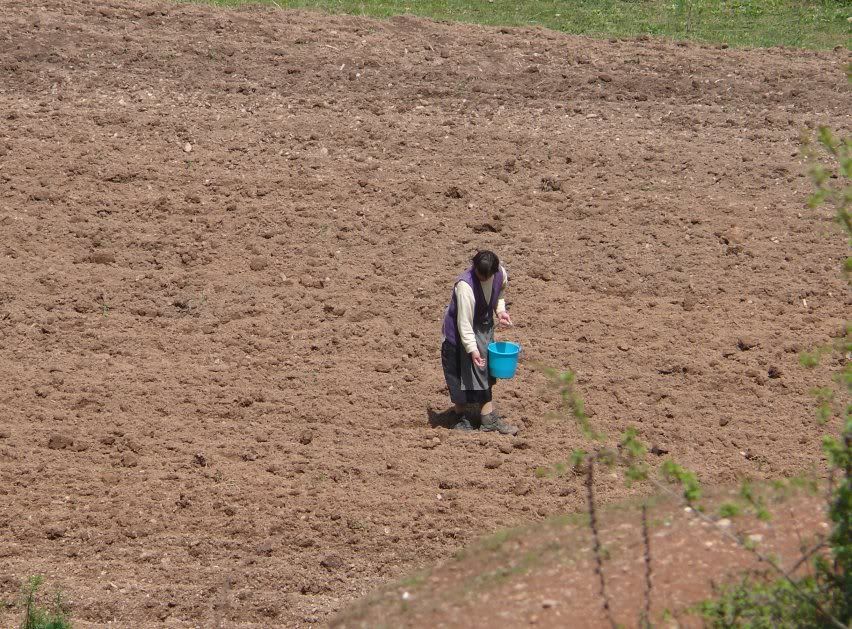
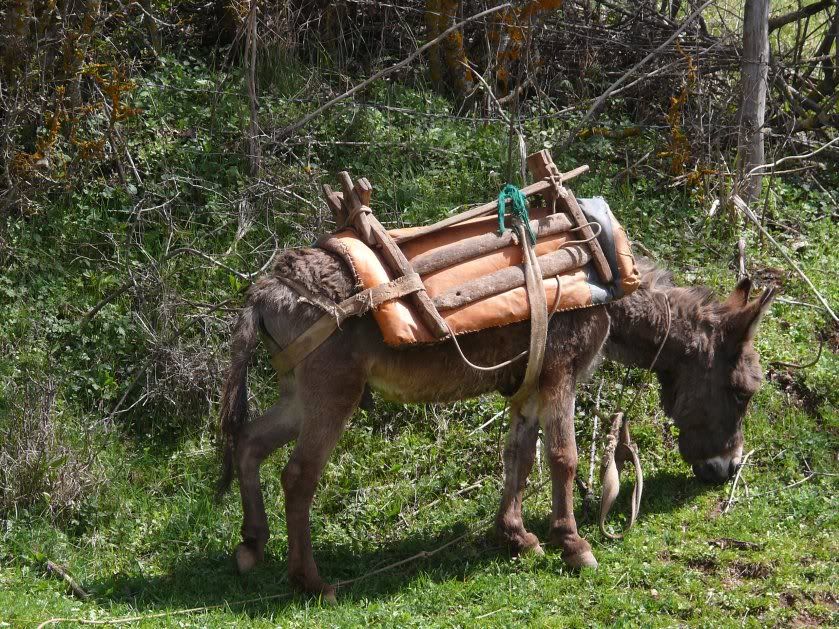
I thoroughly enjoyed he trip through this beautiful, quiet landscape.
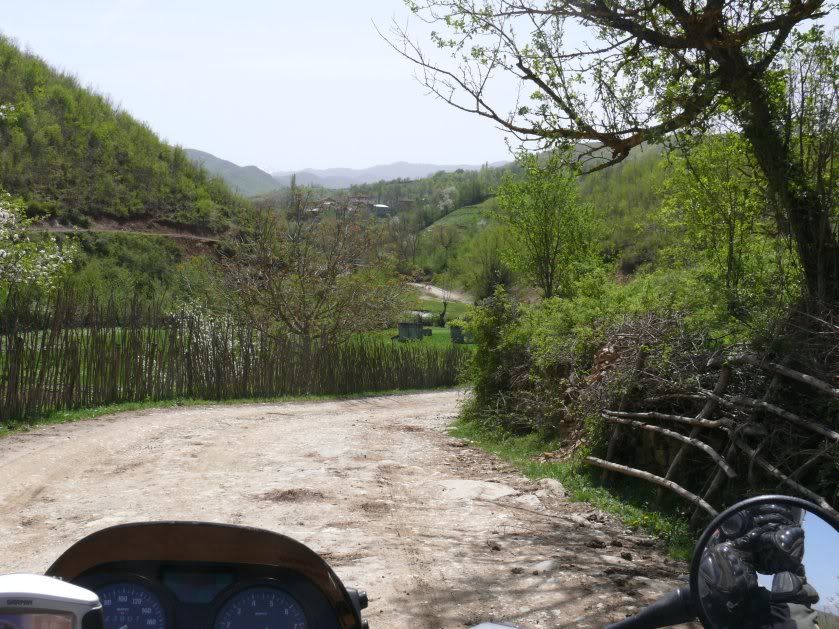
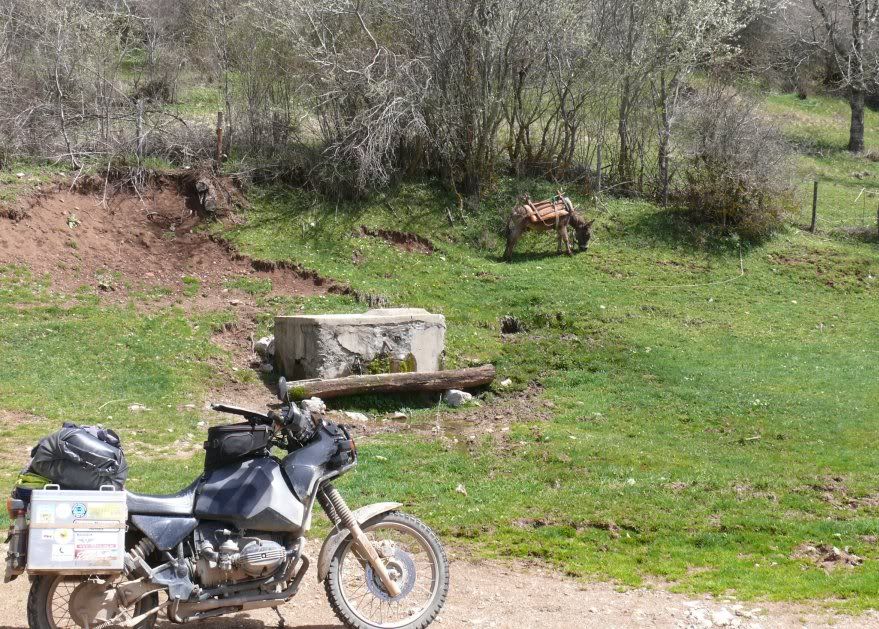
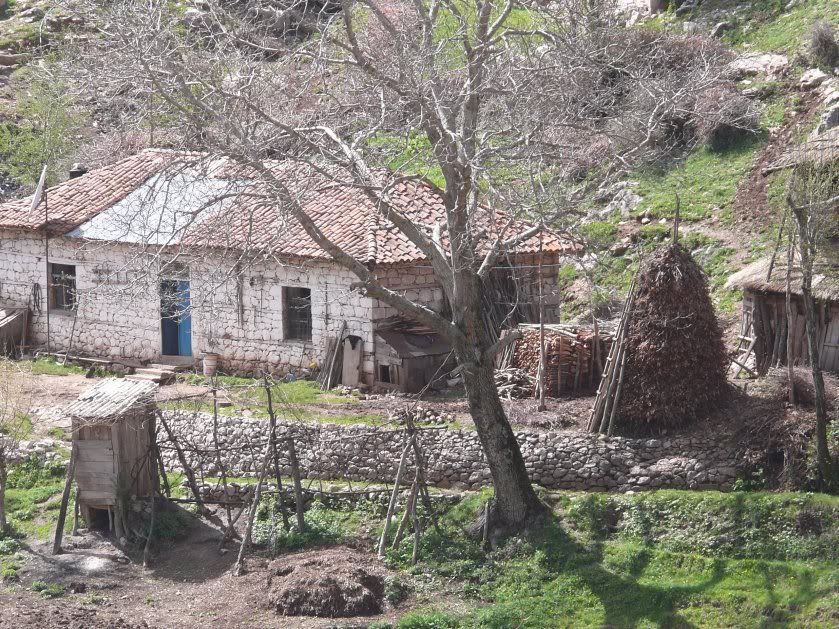
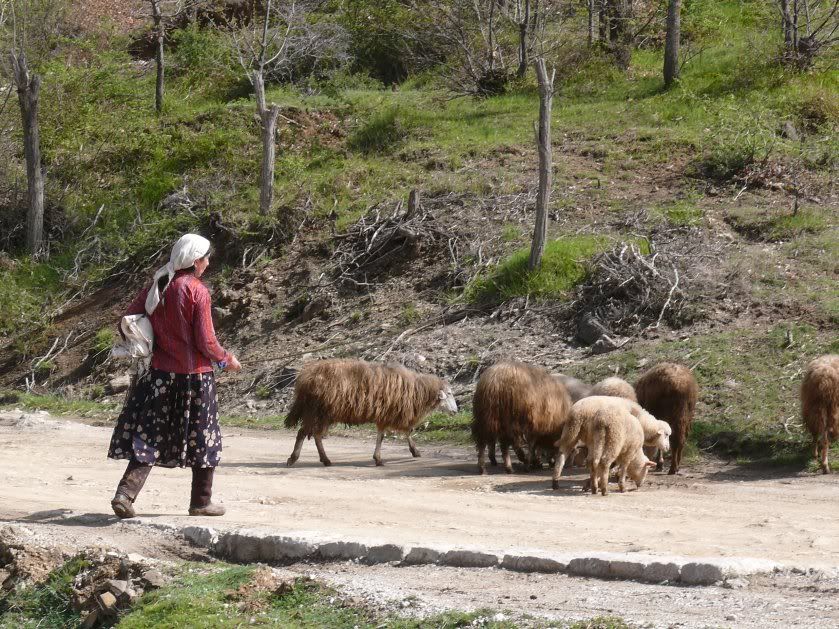
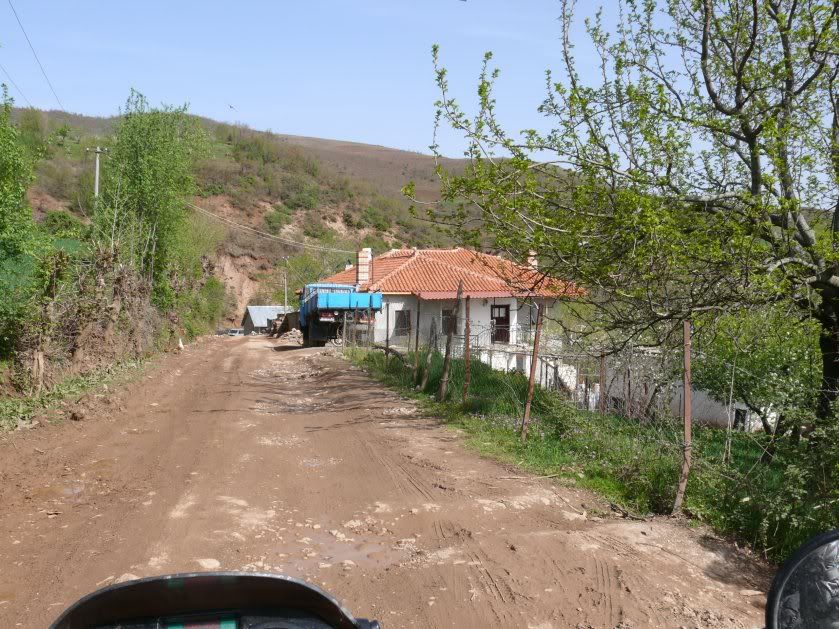
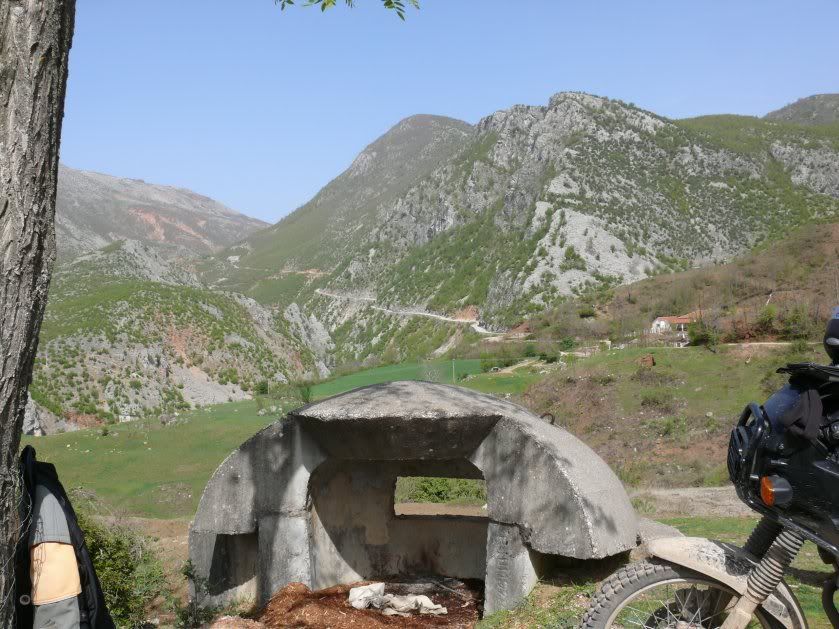
Hard to believe, but this was a normal secondary road. Every now and then you come across the remnants of Enver Hoxha's paranoia: one-man bunkers all over the country.
Crossing the border to Macedonia wasn't a big difference, although it belonged to Yugoslavia and thus being an â??openâ? country as compared to the hermetically closed Albania under Enver Hoxha. As long as he lived the dictator Hoxha sealed the borders of Albania hermetically even for other socialist countries like Russia and later on China. Parallel to that he erected thousands of bunkers at all strategic positions, preparing for a guerilla war that never came, because he expected an invasion any day.
The Macedonian side of Lake Ohrid is one of the few regions in that area where there is a little tourism due to the orthodox monastries like Sveti Naum and several hermitages.
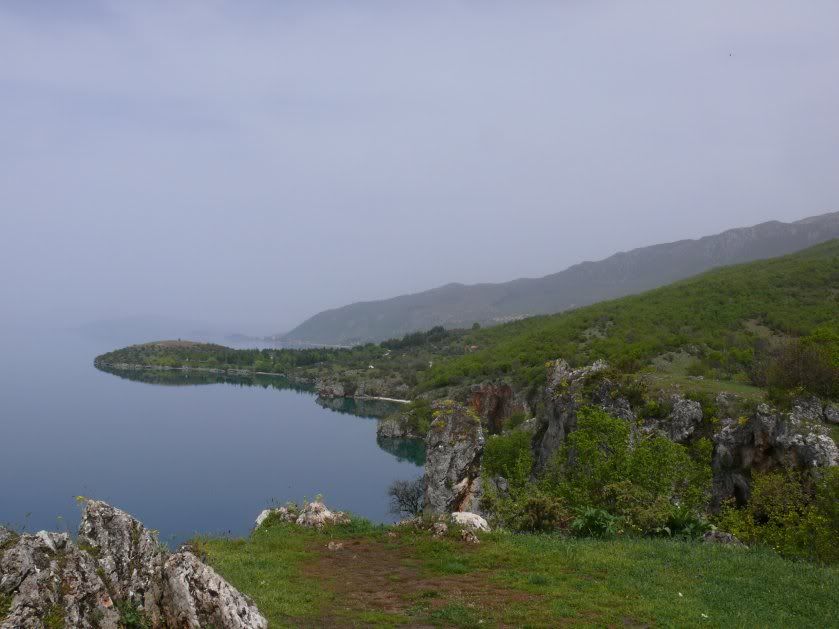
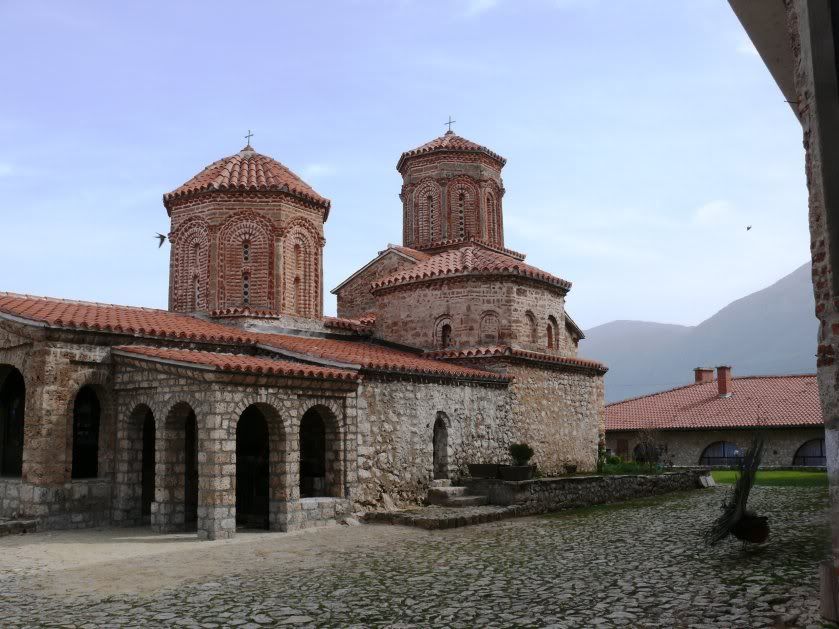
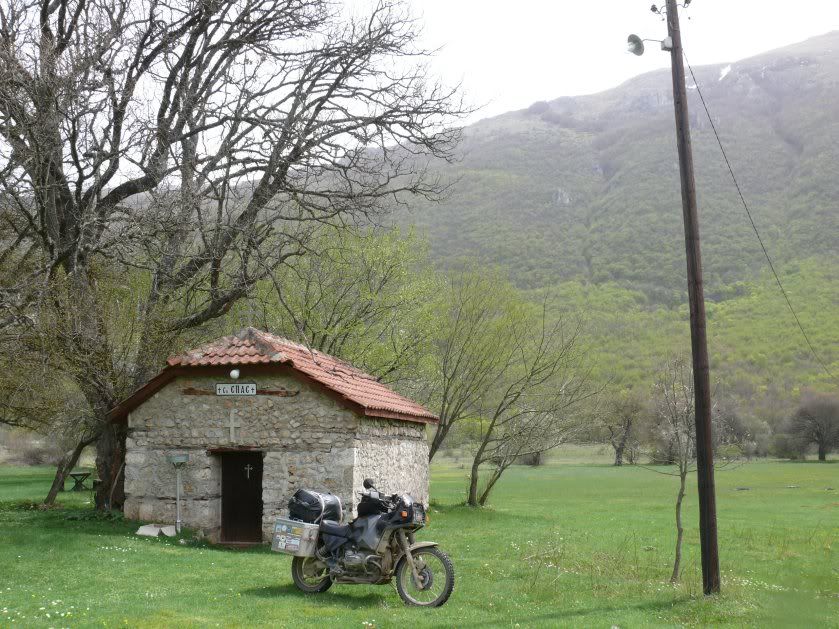
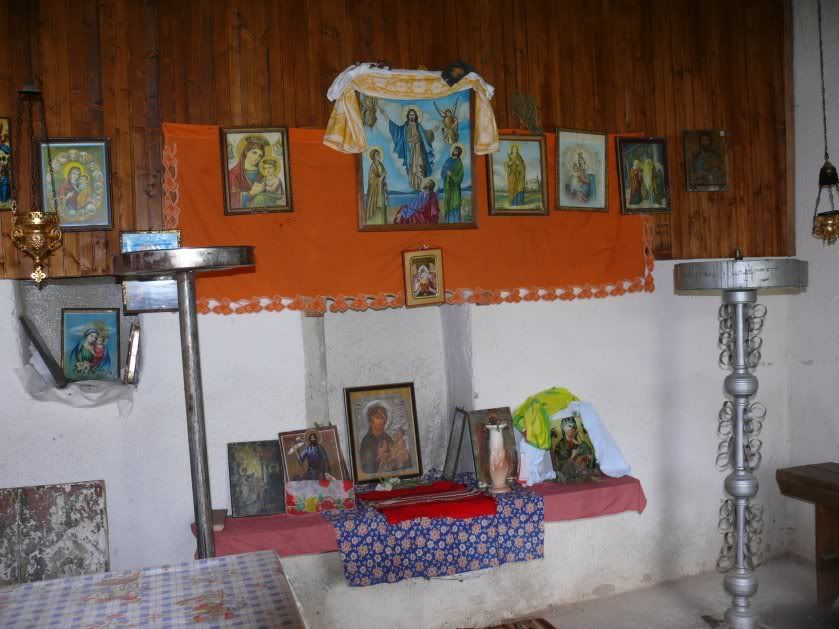
But even here the 21st century is far away. The rural areas often only have dirt roads. Camp sites and hotels are scarce. But those are the precious retreats that allow us to slow down, enjoy nature and forget all the buzz and din of our modern world

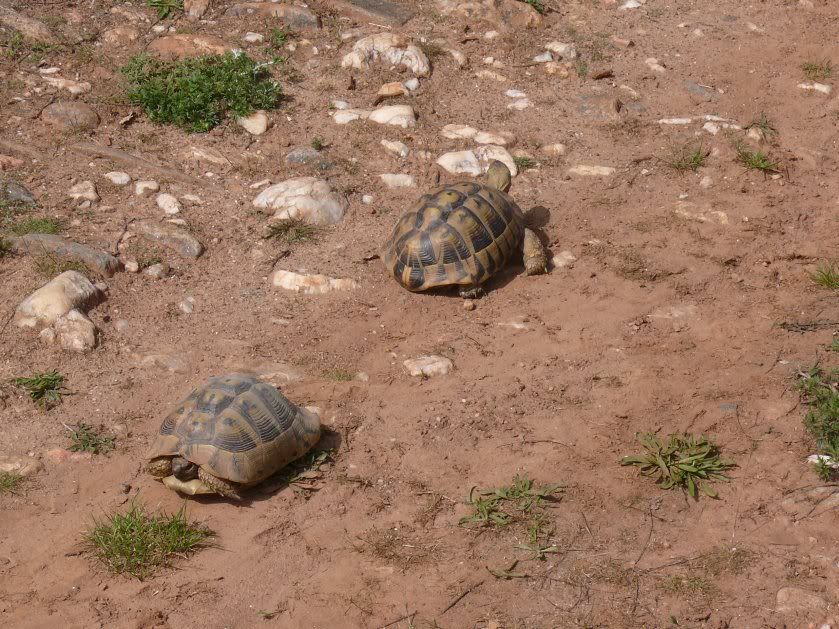
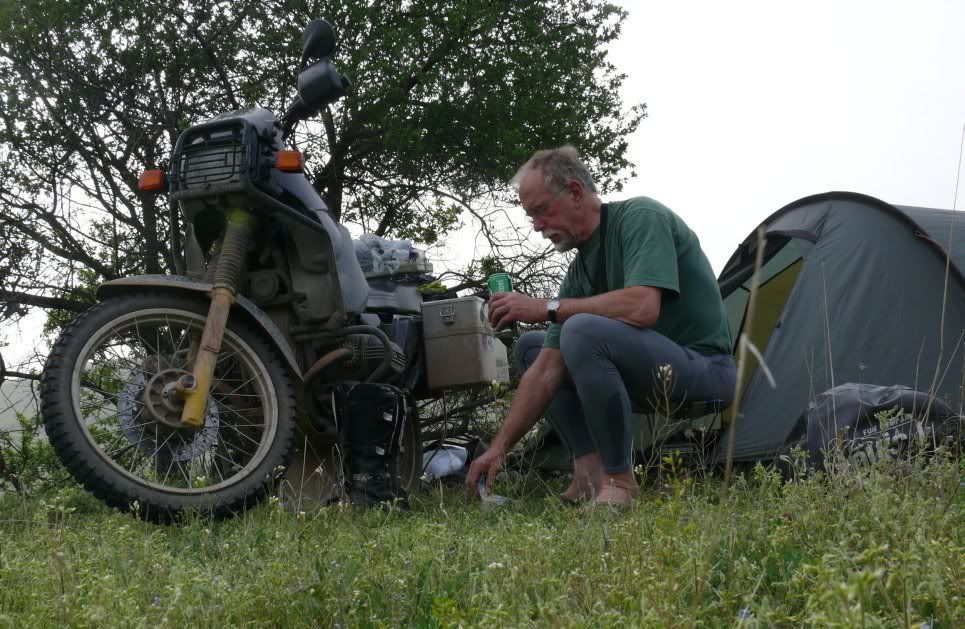
Enjoy!
BTW here's the link to the complete album: https://picasaweb.google.com/Vaufi1947/AlbaniaMacedonia042008#
Hans

One thing is for sure: Albania is one of the most enjoyable countries to visit. Friendly people unspoilt by tourism yet, lots of dirt roads, great landscape.
We entered Albania from south, from Greece. Admittedly, nearing the border, I did have a queer feeling in my stomach since everything you heard about this country was terrible. It was hermetically sealed from the rest of the world for over 40 years and the period after the dictator Enver Hoxha had died was chaos pure: Corruption, crime, drugs, murderâ?¦
The border guards quickly made us change our minds. Their friendly and relaxed way of processing our entry visas and customs etc. put us at ease immediately. After touring around the country for two weeks we came to the conclusion that all the thugs and mafiosi were on business somewhere in western Europe ;-)

We booked a hotel in the beach resort Sarandë

From here we visited the archaeological site of Butrint about 20 kms south of Sarandë.



The ferry crossing the lagoon at Butrint was probably nearly as ancient


Across the coastal mountain ridge to the north-east lies another must-see: Enver Hoxha's place of birth, Gjirokaster. The castle ruins and the old town centre are very picturesque.



Returning to Sarandë there is a narrow, scenic backroad winding through a quiet landscape and small villages.

The next day saw us travelling along the coastal road from Sarandë northwards to Vlorë. The southern coastal road is by far the most beautiful part of the road going past Tirana up to Shkodër. The road is under construction, so that it was partly pretty rutted and muddy. Although this was a main road, it passed through narrow, winding villages clinging to the mountainside.



The highest pass, right next to the Adriatic Sea was over 1,000m. Absolutely stunning!
From Vlorë we turned away from the coast, heading eastwards for Berat, the second medieval town. Spread across a steep mountainside it is topped by a huge fortification dating back to Ottoman times. The Greek Orthodox Church within the precincts has been erected much later.



The little houses of Berat seem to stand on top of each other, staring at you through dark windows. Because of that it is also called the â??town with the thousand eyesâ?.




Towards the west, across of the river lies is the old Jewish quarter where we met Angostine. He proudly showed us around his century old house.



In the centre of Berat is the tourist office. Inside there is still the Ottoman decoration on walls and windows.




Quite nearby we found accommodation at Tomi's Mangaleni Hotel. Ice-cold draft beer and a lovely restaurant was reason enough to stay. From oru balcony we had a fantastic view across the city and the mountains.



The next day took us to Skodër, about 60 kays south of the border to Montenegro. Skodër lies between he beautiful Lake Skutari and the Albanian Alps. The town itself is rather boring: Crumbling buildings from socialist times next to horrible semi-modern architecture. But the rural area, especially north-east of Skodër is very attractive. Not far away is the ancient Ura e Mesit bridge.

Further along are the Albanian Alps, reaching up to more than 2,000m. Unfortunately it was too early for a ride right up to the mountain village of Theti. In late February the Balcans and Greece had snow in abundance. So this stopped me at 1,400m.



Too farken cold for a beer...
After a short picnic (biking makes you hungry) I found an inconspicuous café for a â??kafé turkâ? and a beer.



The guy standing in he middle spoke fairly good English and managed the whole situation ;-)
From here I left for Lake Ohrid, which lies on the eastern border between Albania and Macedonia. As usual the small back roads were much more interesting than the main roads, so I took to the piste directly through the mountains. Here time seems to have stood still. The ploughing and sowing is done with horses and by hand. The donkey is still a general means of transport.



I thoroughly enjoyed he trip through this beautiful, quiet landscape.






Hard to believe, but this was a normal secondary road. Every now and then you come across the remnants of Enver Hoxha's paranoia: one-man bunkers all over the country.
Crossing the border to Macedonia wasn't a big difference, although it belonged to Yugoslavia and thus being an â??openâ? country as compared to the hermetically closed Albania under Enver Hoxha. As long as he lived the dictator Hoxha sealed the borders of Albania hermetically even for other socialist countries like Russia and later on China. Parallel to that he erected thousands of bunkers at all strategic positions, preparing for a guerilla war that never came, because he expected an invasion any day.
The Macedonian side of Lake Ohrid is one of the few regions in that area where there is a little tourism due to the orthodox monastries like Sveti Naum and several hermitages.




But even here the 21st century is far away. The rural areas often only have dirt roads. Camp sites and hotels are scarce. But those are the precious retreats that allow us to slow down, enjoy nature and forget all the buzz and din of our modern world



Enjoy!
BTW here's the link to the complete album: https://picasaweb.google.com/Vaufi1947/AlbaniaMacedonia042008#
Hans





![Professional First Aid Kit, Trauma First Aid Kit with Labelled Compartments Molle System for Car, Hiking, Backpacking, Camping, Traveling, and Cycling[New Upgrade]](https://m.media-amazon.com/images/I/41uCkwNilAL._SL500_.jpg)






















































